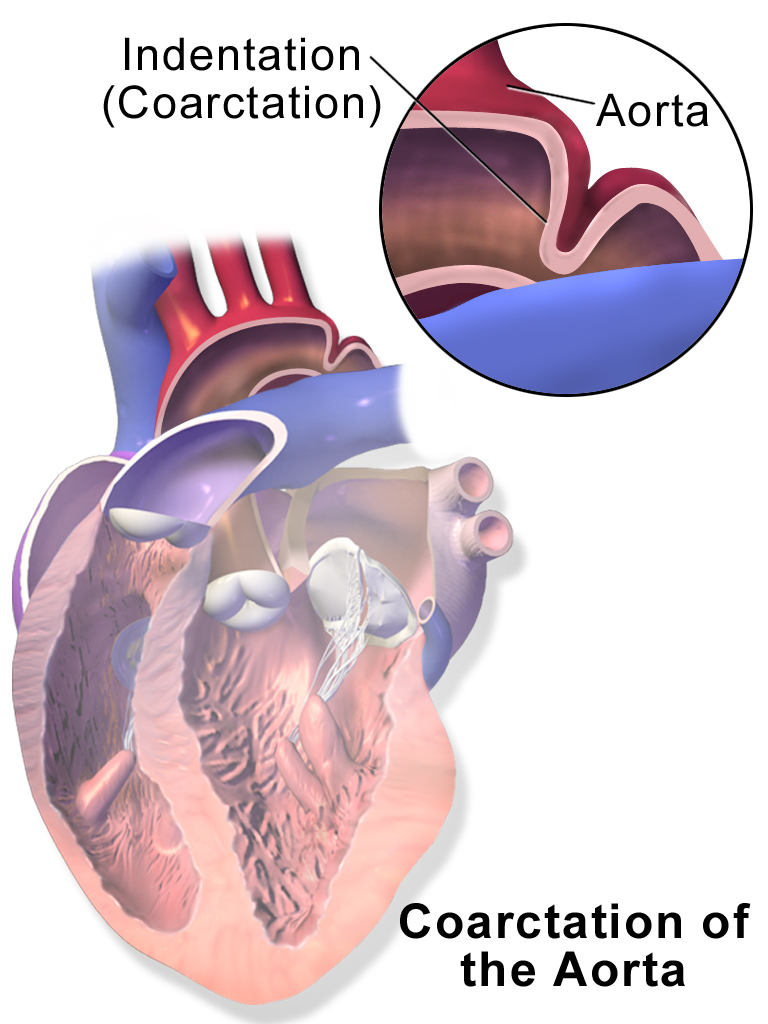Critical Congenital Heart Disease

Critical congenital heart disease (CCHD) is a term that refers to a group of serious heart defects that are present from birth. These abnormalities result from problems with the formation of one or more parts of the heart during the early stages of embryonic development. CCHD prevents the heart from pumping blood effectively or reduces the amount of oxygen in the blood. As a result, organs and tissues throughout the body do not receive enough oxygen, which can lead to organ damage and life-threatening complications. Individuals with CCHD usually require surgery soon after birth.
Although babies with CCHD may appear healthy for the first few hours or days of life, signs and symptoms soon become apparent. These can include an abnormal heart sound during a heartbeat (heart murmur), rapid breathing (tachypnea), low blood pressure (hypotension), low levels of oxygen in the blood (hypoxemia), and a blue or purple tint to the skin caused by a shortage of oxygen (cyanosis). If untreated, CCHD can lead to shock, coma, and death. However, most people with CCHD now survive past infancy due to improvements in early detection, diagnosis, and treatment.
Some people with treated CCHD have few related health problems later in life. However, long-term effects of CCHD can include delayed development and reduced stamina during exercise. Adults with these heart defects have an increased risk of abnormal heart rhythms, heart failure, sudden cardiac arrest, stroke, and premature death.
Each of the heart defects associated with CCHD affects the flow of blood into, out of, or through the heart. Some of the heart defects involve structures within the heart itself, such as the two lower chambers of the heart (the ventricles) or the valves that control blood flow through the heart. Others affect the structure of the large blood vessels leading into and out of the heart (including the aorta and pulmonary artery). Still others involve a combination of these structural abnormalities.
People with CCHD have one or more specific heart defects. The heart defects classified as CCHD include coarctation of the aorta, double-outlet right ventricle, D-transposition of the great arteries, Ebstein anomaly, hypoplastic left heart syndrome, interrupted aortic arch, pulmonary atresia with intact septum, single ventricle, total anomalous pulmonary venous connection, tetralogy of Fallot, tricuspid atresia, and truncus arteriosus.
Frequency
Heart defects are the most common type of birth defect, accounting for more than 30 percent of all infant deaths due to birth defects. CCHD represents some of the most serious types of heart defects. About 7,200 newborns, or 18 per 10,000, in the United States are diagnosed with CCHD each year.
Causes
In most cases, the cause of CCHD is unknown. A variety of genetic and environmental factors likely contribute to this complex condition.
Changes in single genes have been associated with CCHD. Studies suggest that these genes are involved in normal heart development before birth. Most of the identified mutations reduce the amount or function of the protein that is produced from a specific gene, which likely impairs the normal formation of structures in the heart. Studies have also suggested that having more or fewer copies of particular genes compared with other people, a phenomenon known as copy number variation, may play a role in CCHD. However, it is unclear whether genes affected by copy number variation are involved in heart development and how having missing or extra copies of those genes could lead to heart defects. Researchers believe that single-gene mutations and copy number variation account for a relatively small percentage of all CCHD.
CCHD is usually isolated, which means it occurs alone (without signs and symptoms affecting other parts of the body). However, the heart defects associated with CCHD can also occur as part of genetic syndromes that have additional features. Some of these genetic conditions, such as Down syndrome, Turner syndrome, and 22q11.2 deletion syndrome, result from changes in the number or structure of particular chromosomes. Other conditions, including Noonan syndrome and Alagille syndrome, result from mutations in single genes.
Environmental factors may also contribute to the development of CCHD. Potential risk factors that have been studied include exposure to certain chemicals or drugs before birth, viral infections (such as rubella and influenza) that occur during pregnancy, and other maternal illnesses including diabetes and phenylketonuria. Although researchers are examining risk factors that may be associated with this complex condition, many of these factors remain unknown.
Learn more about the genes associated with Critical congenital heart disease
Additional Information from NCBI Gene:
Inheritance Pattern
Most cases of CCHD are sporadic, which means they occur in people with no history of the disorder in their family. However, close relatives (such as siblings) of people with CCHD may have an increased risk of being born with a heart defect compared with people in the general population.